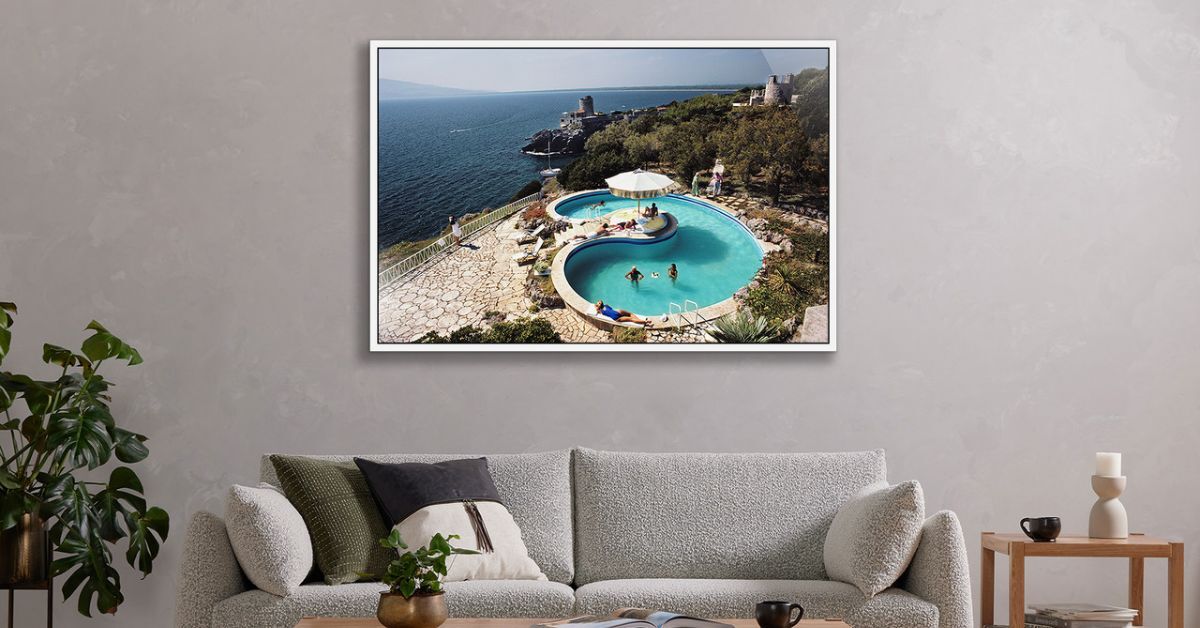Art is one way to make a house feel like a home or to add some flair to a workspace. From abstract pieces to serene landscapes, art has the power to evoke emotions and bring personality into spaces.
However, nothing can make your art feel sloppy than improper hanging. Crooked, awkwardly placed, and improperly lit pieces can make a stunning piece look mediocre. Wonderwall Studio is here to help with our complete guide on how to hang wall art. Use these helpful tips to showcase art like a professional.
Evaluate the Space’s Purpose
Before you pick out any pieces, consider the existing tone and purpose of the space. Are you looking to create a more relaxing space or one that inspires you and serves to improve your productivity? You can use the function of your space to narrow down what type of art you go with, but also how you place it in the room.
For example, a living room may call for a bold focal piece that catches guests’ attention. However, a hanging piece in the bedroom may work better as a calming backdrop to help you relax at the end of a long day. The more you understand the purpose of your space, the more likely you are to find pieces that complement the room’s aesthetics.
Measure and Choose the Right Scale
When hanging art on the wall, it’s a good idea to get a proper sense of scale. If you hang small pieces on large walls, they can make the space feel uncomfortably open, but larger frames require a decent amount of surrounding wall space to avoid looking cramped and unsettling.
Always measure the area you’re working with. If you’re hanging a piece above furniture, try to hang pieces that are around two-thirds to three-fourths the width of the furniture beneath it. Framing the piece with adequate wall space on all sides helps it look more purposeful and prevents creating a crowded space.

Focus on Placing Art at Eye Level
The height of your piece plays a big role in how people perceive it. If you hang the piece too low, it can disrupt the general harmony of the space, but if it’s too high, people craning their necks to look at it may find the experience unpleasant.
Aim for eye-level artwork. This typically falls at 60 inches from the floor. Of course, that may change if you’re hanging the piece above furniture. In that case, try to position it around six to eight inches above the top of the furniture to balance each item in the room. Proper height placement helps your art make the space feel proportional.
Create a Gallery Wall
If you have a large wall space but want to hang a selection of small pieces, you can create a gallery wall that combines multiple pieces of different sizes and mediums. Keep in mind that these galleries require careful planning to devise a cohesive look.
Does your gallery have a theme? Connect pieces together by a certain medium, from photography to abstract art to minimalist sketches. Alternatively, the gallery could combine styles or mediums together if the pieces follow a similar subject material, like wildlife or floral arrangements.
It’s a good idea to measure your pieces before you try to hang out and plan out their positioning and spacing ahead of time. Mix horizontal, vertical, and square frames to keep the eye moving from piece to piece. Allowing for visual intrigue while maintaining coherence is an effective approach. Therefore, it’s easiest to achieve a balanced gallery wall without being overly symmetrical.
Consider the Lighting
When figuring out how to hang wall art, always consider how lighting affects people’s perception of the artwork. Light can emphasize colors and textures to make art stand out more and add more to the space. Consider both your natural and artificial light sources and see where they shine in your room.
You can install track lighting, wall sconces, or even picture lights to spotlight individual pieces. While natural sunlight is always a good option, remember the negative effects that UV rays can have on a piece. You may want to consider installing nonreflective glass to help prevent glare and reduce the risk of fading colors.

Frame the Art With a Purpose
Frames do more than protect artwork; they enhance its presentation and heighten its impact. Choosing the right frame is an important step as you want to find something that complements both the art itself and your room’s general decor.
Use simplistic frames with neutral colors like black, white, or natural wood to complement modern or minimalist settings. If you’re aiming for a more sophisticated or classical interior, consider ornate or gilded frames that accentuate the decor and piece itself.
Follow the Proper Techniques for Hanging Up Art
Hanging wall art may seem straightforward, but you may have to deal with crooked or improper displays if you’re not careful. Use the hardware that coincides with the wall’s material. Drywall anchors are necessary for heavy pieces, and sawtooth hangers may work with lighter frames.
Always use a level and measuring tape to try and minimize errors as much as possible. When in doubt, consult weight guidelines on the packaging of your chosen hardware. Remember, double-checking measurements saves time and effort in the long run.
Layer Pieces of Art for Additional Depth
Layering can provide a fresh take on displaying art without the need for traditional wall mounting. You might prop framed artwork on a mantel, console table, or open shelving, layering multiple pieces of varying heights and sizes for depth.
This technique works well for spaces where you’re trying to create a relaxed, eclectic look that complements the existing decor. By incorporating objects like books, vases, or plants, you can create vignettes that feel curated and lived-in.
Elevate Your Home With a Thoughtful Display
Displaying wall art is valuable when designing a room. Try to choose pieces that resonate with you and display them in a way that reflects your tastes, values, and style.
Wonderwall Studio has a wide range of wall art pieces from some of the most talented artists in the world. Check out our selection of Slim Aaron prints to bring sophistication and style into your decor. Explore our curated collection and find the perfect piece for your artistic journey.



